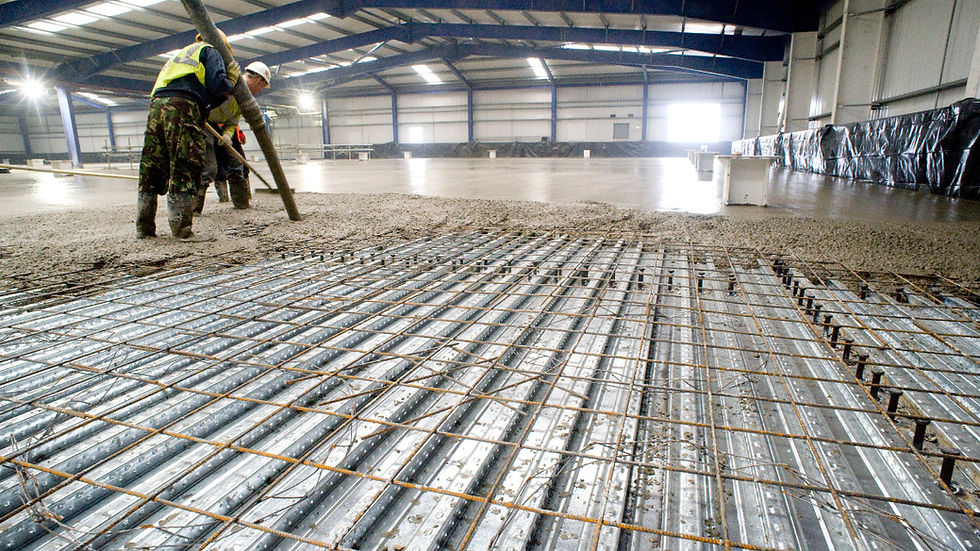The Durability Performance of PVA Fiber-Reinforced Concrete Under Sulfate and Chloride Exposure
- pioneerfiber

- Aug 13
- 4 min read
Information Tags
• Type: 4-minute read
• Audience: Construction professionals, engineers, architects, contractors

Understanding Durability Challenges in Concrete Structures
Concrete is widely used in infrastructure, but its durability can be severely compromised by environmental exposure — particularly to sulfates and chlorides. These aggressive ions penetrate the matrix, triggering chemical reactions that lead to expansion, cracking, corrosion of embedded steel, and ultimately structural failure.
The Role of Fibers in Enhancing Durability
Incorporating fibers into concrete has emerged as an effective strategy to mitigate damage from chemical ingress. Among synthetic fibers, Polyvinyl Alcohol (PVA) fibers have demonstrated exceptional performance in resisting degradation due to their strong bond with the matrix and ability to control microcracking.
Mechanisms of Sulfate and Chloride Attack on Concrete
To fully appreciate the benefits of PVA fiber-reinforced concrete, it’s important to understand how sulfates and chlorides compromise concrete durability.
1. Sulfate Attack
Sulfates react with hydration products like calcium hydroxide and aluminate phases to form expansive compounds such as ettringite and gypsum. This reaction causes internal pressure, leading to:
Cracking
Expansion
Surface scaling
Loss of strength
2. Chloride Ion Penetration
Chloride ions are notorious for initiating reinforcement corrosion in reinforced concrete. Once they reach the steel rebar, they break down the passive oxide layer, resulting in:
Rust formation
Crack propagation
Spalling
Structural weakening

How PVA Fibers Improve Durability Performance
The inclusion of PVA fibers significantly enhances concrete's resistance to both sulfate and chloride attack through several key mechanisms:
1. Crack Width Control
PVA fibers effectively bridge microcracks formed during shrinkage or loading, reducing the width and connectivity of cracks. This limits the pathways available for aggressive ions to penetrate the matrix.
2. Reduced Permeability
A well-dispersed network of PVA fibers acts as a physical barrier, slowing down ion diffusion and moisture migration. This results in lower chloride penetration rates and improved resistance to sulfate ingress.
3. Enhanced Bonding at the Interface
Due to their hydrophilic nature, PVA fibers develop strong interfacial bonding with cement paste. This not only improves mechanical performance but also reduces porosity around the fiber-matrix interface, enhancing overall chemical resistance.
Experimental Evidence Supporting Durability Performance
Numerous studies have evaluated the performance of PVA fiber-reinforced concrete under simulated sulfate and chloride exposure conditions. Key findings include:
Test Condition | Without Fibers | With PVA Fibers |
Chloride Diffusion Coefficient | High | Significantly Reduced |
Expansion Due to Sulfate Attack | Moderate to High | Substantially Lower |
Compressive Strength Retention After Exposure | Decreased | Better Maintained |
Crack Width Reduction | N/A | Up to 60% reduction |
These results confirm that PVA fibers play a critical role in preserving concrete integrity when exposed to aggressive environments.
Real-World Applications Benefiting from PVA Fiber-Reinforced Concrete
Several types of infrastructure benefit greatly from the enhanced durability performance of PVA fiber-reinforced concrete, especially in regions prone to chemical exposure.
Key Applications Include:
Marine structures – Wharves, piers, and offshore platforms exposed to seawater
Wastewater treatment plants – Environments rich in sulfates and acidic compounds
Coastal bridges and tunnels – Constant exposure to salt spray and chloride-laden air
Industrial flooring – Areas subjected to chemical spills and cleaning agents
Each of these applications demands high durability and low maintenance, qualities that PVA fiber-reinforced concrete consistently delivers.

Material Optimization for Maximum Chemical Resistance
To achieve optimal durability performance under sulfate and chloride exposure, proper material selection and mix design are essential.
Recommended Best Practices:
Use PVA fibers with length < 15 mm and diameter < 0.04 mm for best dispersion
Ensure uniform mixing to avoid fiber balling or segregation
Combine with supplementary cementitious materials (SCMs) like fly ash or slag to reduce permeability
Consider hybrid systems incorporating steel or other fibers for multi-scale reinforcement
By tailoring these parameters, engineers can maximize the chemical resistance and service life of concrete structures.
Sustainability and Long-Term Value
Beyond technical performance, PVA fiber-reinforced concrete contributes to sustainable construction by extending the lifespan of infrastructure and reducing the need for costly repairs and replacements.
Their non-corrosive nature, compatibility with green binders, and recyclability potential align with modern sustainability goals. As climate change increases exposure to aggressive environments, durable, low-carbon solutions like PVA fiber-reinforced concrete will become even more valuable.
Explore PIONEER’s range of concrete reinforcement fibers and how they improve concrete properties. Visit our website: www.pioneerfibre.com
Micro fiber >> Learn More
Macro fiber >> Learn More
Steel fiber >> Learn More
Asphalt fiber >> Learn More
Contact us today to request samples, technical data, or a custom solution for your project.
Email: Sales@pioneerfibre.com | Email: Support@pioneerfibre.com
WhatsApp: +1 (929) 569-9989 | +86 151-6240-5106
## SEO Section
- Tags: durability performance of PVA fiber-reinforced concrete, sulfate exposure, chloride exposure, PVA fiber, concrete durability, chemical resistance, construction materials, fiber-reinforced concrete, infrastructure resilience, advanced building technology
- Meta Title: Why PVA Fiber-Reinforced Concrete Excels in Sulfate and Chloride Environments
- Meta Description: Discover how PVA fiber-reinforced concrete maintains superior durability performance under sulfate and chloride exposure, offering long-term protection for infrastructure.
- URL Suffix: /durability-performance-pva-fiber-reinforced-concrete-sulfate-chloride-exposure
- OG Title: How PVA Fibers Boost Concrete Durability Against Sulfate and Chloride Damage
- OG Description: Learn why PVA fiber-reinforced concrete delivers outstanding durability performance under sulfate and chloride exposure, ensuring longer-lasting, safer infrastructure.





Comments